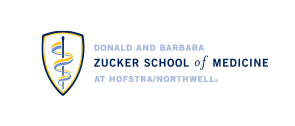Determination of optimal endotracheal tube tip depth from the gum in neonates by X-ray and ultrasound.
Publication Date
2018
Journal Title
J Matern Fetal Neonatal Med
Abstract
BACKGROUND/OBJECTIVE:Proper placement of endotracheal tube (ETT) in the midtrachea is essential. Initial depth of placement of oral ETT from the lips is commonly estimated based on weight ("7-8-9 rule"), gestational age, or nasal-tragus distance. However, these measurements can be altered by superficial factors and the mobility of the lips relative to the airway, so the upper alveolar ridge (gum) may provide a superior landmark. Also, confirmation of ETT tip position by point of care ultrasound (POC-US) is noninvasive and may enable localization of the ETT tip in real time. The objective of this study is to define optimal initial ETT depth from the gum in infants relative to weight, and to compare the efficacy of POC-US with standard chest x-ray (CXR) for confirming ETT tip position. METHODS:Neonates requiring oral intubation were enrolled. At the time of CXR that were obtained for clinical indications, the position of the ETT at both the lip and gum were recorded. "Optimal" ETT placement in midtrachea (from lip and gum) was calculated based on the observed measurements and the distance of the ETT tip from the carina on CXR. Linear regression was used to model ideal placement of ETT, as a function of weight. POC-US was performed using a 10 MHz cardiac probe and high parasternal view. Distance from the ETT bevel to the superior aspect of the right pulmonary artery, which is at the level of carina, was measured using electronic calipers. RESULTS:Infants were recruited at a median age of 3 days (n = 75), weight 1300 g, and corrected gestational age 31.6 ± 5.8 weeks. The regression equation for optimal placement from the gum (in cm) was 5.21 + 1.03 × weight (kg). Using estimates of 5 or 5.5 cm + weight (kg) to the gum yielded accuracy similar or superior to the 7-8-9 rule to the lip. Most of the variability in ideal placement of ETT tip from the gum was determined by weight (R2 = 0.83). The difference between optimal placement using lip and gum was 0.51 ± 0.24 cm. ETT location by POC-US (n = 40) was in substantial agreement with CXR (intraclass correlation coefficient 0.95, 95% CI: 0.92, 0.98). CONCLUSIONS:Marking oral ETT placement to the gum is feasible, with optimal depth of about 5.2 cm + weight (kg), across all weight categories. POC-US can be used for rapid confirmation of continued ideal ETT tip location, with accuracy similar to CXR. Further studies will be needed to determine whether marking ETT depth to the gum or using POC-US achieves the goal of decreased complications of ETT misplacement or displacement.
Volume Number
Apr
Pages
1-6
Document Type
Article
Status
Faculty
Facility
School of Medicine
Primary Department
General Pediatrics
PMID
DOI
10.1080/14767058.2018.1538350


